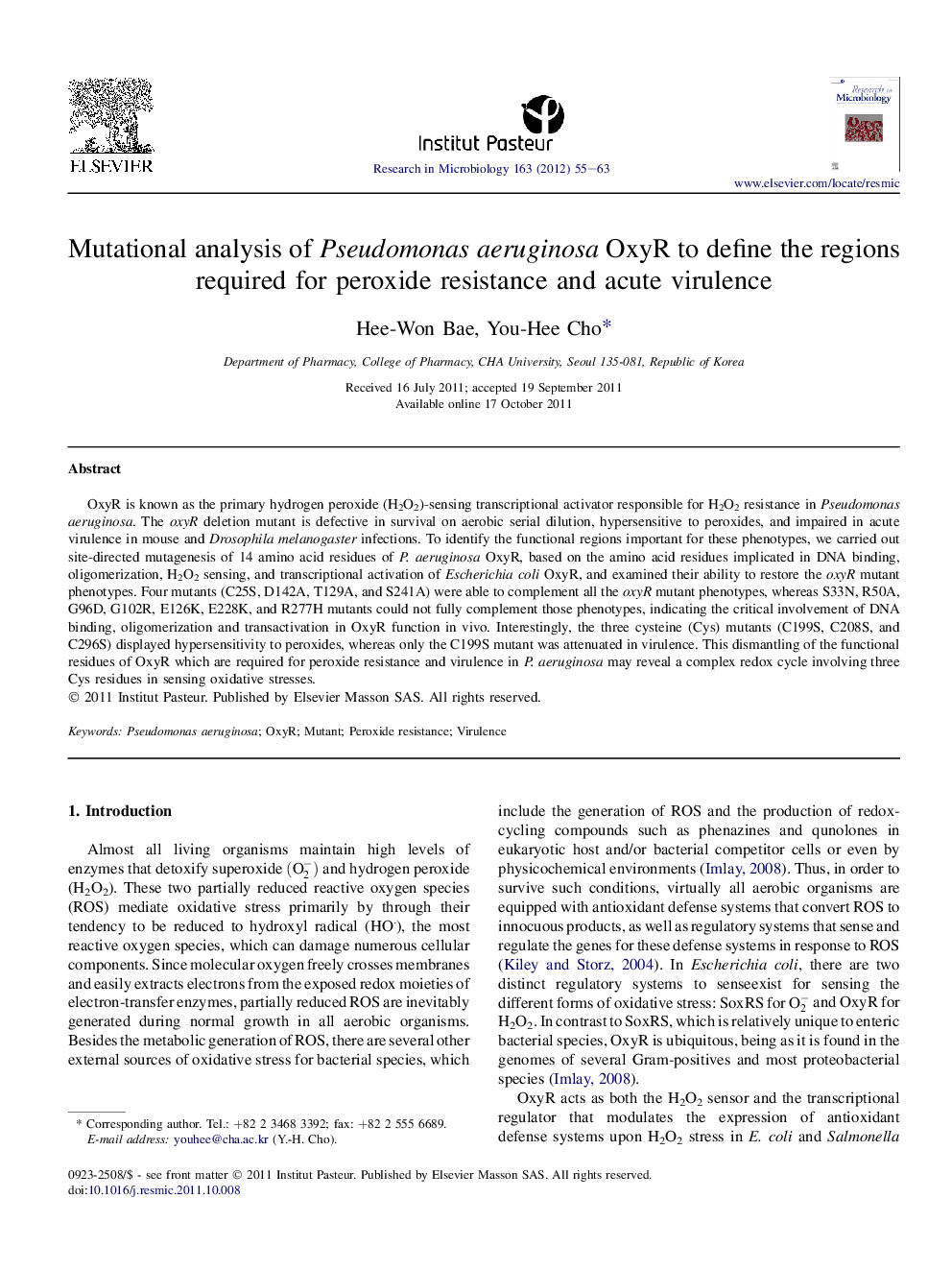| Article ID | Journal | Published Year | Pages | File Type |
|---|---|---|---|---|
| 4358801 | Research in Microbiology | 2012 | 9 Pages |
OxyR is known as the primary hydrogen peroxide (H2O2)-sensing transcriptional activator responsible for H2O2 resistance in Pseudomonas aeruginosa. The oxyR deletion mutant is defective in survival on aerobic serial dilution, hypersensitive to peroxides, and impaired in acute virulence in mouse and Drosophila melanogaster infections. To identify the functional regions important for these phenotypes, we carried out site-directed mutagenesis of 14 amino acid residues of P. aeruginosa OxyR, based on the amino acid residues implicated in DNA binding, oligomerization, H2O2 sensing, and transcriptional activation of Escherichia coli OxyR, and examined their ability to restore the oxyR mutant phenotypes. Four mutants (C25S, D142A, T129A, and S241A) were able to complement all the oxyR mutant phenotypes, whereas S33N, R50A, G96D, G102R, E126K, E228K, and R277H mutants could not fully complement those phenotypes, indicating the critical involvement of DNA binding, oligomerization and transactivation in OxyR function in vivo. Interestingly, the three cysteine (Cys) mutants (C199S, C208S, and C296S) displayed hypersensitivity to peroxides, whereas only the C199S mutant was attenuated in virulence. This dismantling of the functional residues of OxyR which are required for peroxide resistance and virulence in P. aeruginosa may reveal a complex redox cycle involving three Cys residues in sensing oxidative stresses.
